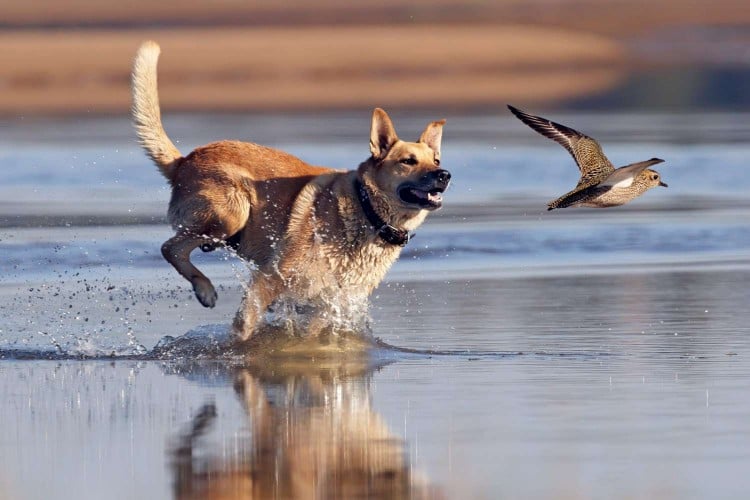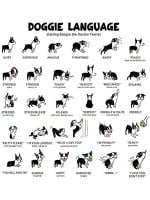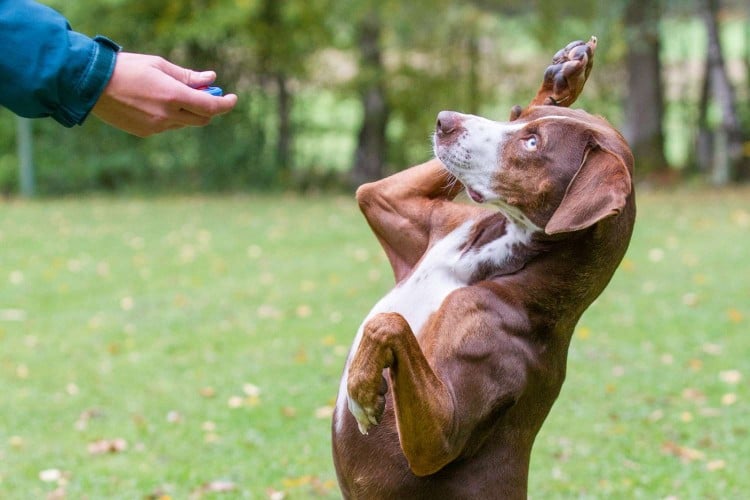
Our dogs often do things that we have a difficult time understanding. They dig, they chew, they eat garbage, they nip at our heels or chase our cats (poor kitties!). They often leave us scratching our heads, looking for answers to explain their canine antics. When we don't know how to explain why our dogs do such things, we might chalk it up to a commonly used term: prey drive. But what is that, really?
Unfortunately, there is no easy definition or explanation. I know, I know, it figures. But labeling behaviors in dogs is a complicated business and doing so without caution can lead to a lot of frustration, for both you and your dog.
What is Prey Drive in Dogs?
Commonly, when we refer to prey drive we are talking about a dog's ability and desire to find, pursue, and catch prey. In some circles, prey drive is synonymous with high energy and a general desire to perform behaviors or "work."
So let's break the term down a little. When you talk about "prey," there are a lot of different things you could be referring to. Does the dog want to find/pursue/catch an animal? A toy? A piece of food? And what does the dog want to do with it?
"Does it mean a drive to run, to chase, to catch something, to bite it, to kill it, or any combination of these?" says Karen B. London, Ph.D., a certified applied animal behaviorist and certified professional dog trainer. The answers to those questions vary with the situation.
Now the word "drive." If we consider the behavior of animals in their natural environments, prey drive isn't really a thing and can be confused with predatory behavior. The concept of "drive" can be summed up as motivation or desire, and this fluctuates from one time to the next. For example, if you just ate a huge meal and then someone asks you to walk to a local eatery for ice cream, you likely will have little, if any, motivation (or drive) to do so. However, if you haven't eaten a sweet snack all day, you may be much more eager to go for that walk.
Generally, here's how I think we're safest using the term prey drive: When we are attributing prey drive to an entire breed, we are referring to a predisposition to hunt, pursue, and capture prey, which can be natural doggie behaviors that many breeds have the genetic make-up for.
I tend to avoid including "chasing" under the term prey drive because most dogs enjoy a good game of chase but don't necessarily want to "capture"; when the chasing fun is done, they are content to do something else. For example, herding breeds, like the Australian cattle dog or Border collie, love to chase and nip ankles but their goal isn't to snare quarry.
I personally own an Australian shepherd (Aussie) and a borzoi. My Aussie looooves to chase things, including us and his canine buddies, but he stops the second the movement ends. My borzoi on the other hand once very nearly caught a rabbit as it fled through a small hole in our fence. I doubt he would have known what to do with the rabbit if he had caught it, but the desire to try was certainly apparent. Both of them live peacefully inside my home with my two cats, though, which surprises many people who believe a cat could be prey to a very "houndy" dog.
Owners are often surprised and frustrated by behaviors associated with hunting, especially chasing behaviors, and when they think of these actions as "prey drive" they may become concerned their dog has a serious issue, such as aggression.
What Is a Reactive Dog? An Expert Explains
Does My Dog Have a High Prey Drive? And Should I Worry?
Using the term prey drive doesn't necessarily describe a specific dog's personality but instead labels a lot of different behaviors or actions happening at a specific moment. What is important here is the context: What are you seeing? When is it happening? Prey drive is the sum of lots of different behaviors occurring together in a certain context.
Breeds that have been systematically bred to pursue, chase, or hunt are more likely to exhibit behaviors labeled under the term "prey drive." For underprepared owners, not recognizing and addressing these potential behaviors in their dog's breed could lead to trouble. For instance, owners should understand it is possible their rat terrier may capture and kill (and maybe eat) unsuspecting chipmunks. And an owner of a saluki should understand their dog may suddenly take off after a rabbit, leaving them in their dust.
Careful consideration should be taken when bringing any dog into your home, especially a breed that could have a genetic predisposition to these sorts of behaviors.
"The bottom line is that every dog is an individual, but breeding makes a difference. While all dogs have it in them to chase things, and some to even to bite or kill another animal, certain breeds have been designed to do this more than others," says Irith Bloom, CPDT-KSA, CBCC-KA, CDBC, CSAT, KPA CTP, VSPDT, CBATI, VSDTA Faculty, DWA Faculty, owner of The Sophisticated Dog, LLC.
Ditch the Stereotypes: Our Dogs' Behaviors Aren't Determined By Only Their Breeds, Study Finds
If you're considering adopting a dog whose breed is known for having a strong predisposition for prey-drive type behaviors, make sure you do extensive research, planning, and preparation before you bring them home. Speak at great lengths with a reputable breeder, a licensed veterinarian, and a certified professional dog trainer. Hang out with an owner, and observe the dog breed around other dogs, people, and other animals. The more informed you can be the better chance you have in selecting a canine companion well-suited to your lifestyle.
On the other hand, just because your dog loves to chase or sniff out and pursue local critters on your walks doesn't mean you need to be concerned he has aggressive tendencies or will be difficult to live with. You'll want to observe any such behaviors in as many contexts as you safely can before making assumptions about the dog's behavior. When your dog is doing something that concerns you, or you are having a difficult time managing, it is best to seek the help of a board-certified veterinary behaviorist or certified animal behavior consultant.
Of course, proper management is always best when it comes to dealing with doggie behaviors. Through the use of positive reinforcement, you can teach any dog to ignore things that might normally catch their eye and instead give attention to you or offer behaviors that are more suitable for your needs (alternative behaviors to chasing such as "come," "stay," or "leave-it").





